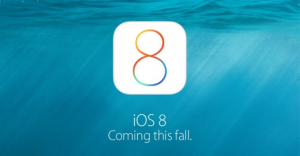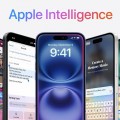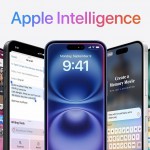Apple’s iOS 8 and iPhone 6: A Paradigm Shift for Enterprise Developers
— September 11, 2014As tech enthusiasts and developers, we eagerly awaited Apple’s official announcements for the iPhone 6 and iOS 8. Apple has a long-standing tradition of generating excitement with each new release, and this year was no exception. A flurry of rumors and leaks surrounded new functionalities and innovations. The sheer breadth of over 4,000 new APIs in iOS 8 is impressive, representing one of the most expansive updates in Apple’s history and promising substantial benefits, especially for enterprise-level mobile development. Below are the most noteworthy updates in iOS 8 that are particularly relevant for developers in the enterprise mobile app development field:
1. App Extensions: Simplifying and Enhancing User Experience
One of the most transformative updates in iOS 8 is the introduction of App Extensions, which provide newfound flexibility and functionality to app development. Previously, app functionalities were confined to their own isolated environments. Now, app extensions allow developers to integrate their applications more deeply into the iOS ecosystem.
For instance, Photo Editing Extensions enable apps to offer seamless photo-editing capabilities directly within the Photos app, allowing users to apply advanced edits without switching between apps. This change will save development time, reduce redundancy, and create a more cohesive and user-friendly experience—crucial in enterprise environments where efficiency is paramount.
Storage Extensions streamline data access and storage by integrating with popular cloud services like Dropbox, Google Drive, and iCloud. This integration makes document and data management faster and more intuitive, benefiting enterprise users by facilitating secure file retrieval and storage directly within enterprise apps, thereby standardizing and enhancing user experiences.
The addition of custom keyboards is another significant change. In industries where accurate data entry is critical, such as healthcare and finance, tailored keyboard layouts can improve productivity and accuracy. Additionally, social sharing extensions allow seamless content sharing through custom platforms—ideal for enterprises with internal social channels or CRM integration needs.
2. Introducing Apple’s “Kit” Frameworks: Revolutionizing Development Possibilities
Apple’s new frameworks, or “Kits,” have captured the attention of both consumer and tech circles, representing Apple’s vision for integrating software solutions across lifestyle, health, and IoT realms. Here’s a deeper look at how each framework can serve enterprise developers and enhance app functionality.
a) PhotoKit – Professional Photo Controls for Any User
PhotoKit introduces advanced image control functionalities that were once exclusive to dedicated camera apps. Now, users can access manual camera controls—such as focus, exposure, and white balance adjustments—directly within any app utilizing this kit. Enterprise apps that involve photo documentation or visual content creation, such as in real estate or insurance claims processing, can benefit immensely.
Additionally, PhotoKit allows for more efficient storage and retrieval of thumbnails and full-sized images, streamlining content management processes within apps. Its API architecture is designed for seamless integration with cloud-based storage systems, which is advantageous for applications prioritizing media management. This feature can be particularly valuable for industries like construction or retail, where high-quality images are used for progress tracking and product cataloging.
b) HealthKit – The Future of Digital Health Integration
HealthKit stands out as a pivotal advancement in iOS 8, offering a centralized platform for securely managing and sharing health data. For healthcare developers, HealthKit provides a secure environment for tracking health metrics such as heart rate, blood pressure, and activity levels, integrating seamlessly with health monitoring devices and wearables.
The potential for enterprise health initiatives is significant—corporations can use HealthKit to monitor employee wellness, provide incentives for active lifestyles, or deliver health-related benefits based on real data. Moreover, Apple’s emphasis on user privacy with HealthKit ensures that sensitive health data is protected, which is essential for compliance with HIPAA and other regulations. As developers like VitalBox demonstrate with their Personal Health Platform, integrating health data into a unified system is revolutionary, enabling healthcare providers and patients to take proactive measures in managing chronic conditions and preventing illnesses.
c) HomeKit – Expanding into the Internet of Things (IoT)
HomeKit enables iOS apps to communicate with and control a range of connected devices, such as lights, locks, thermostats, and other IoT devices. This platform allows developers to create apps that seamlessly integrate with smart devices, bringing IoT technology into everyday homes and eventually into enterprise applications.
The implications of HomeKit for the enterprise sector are significant. Imagine integrating HomeKit with enterprise security systems, which would allow users to control building access, monitor environmental conditions, and manage various IoT-enabled devices within commercial spaces. By providing a standardized API for device management, HomeKit empowers companies to explore IoT with greater confidence, establishing secure and controlled environments using Apple’s trusted ecosystem.
3. Metal: Redefining Graphics Performance for High-Quality Mobile Experiences
Apple’s Metal framework is a groundbreaking development for both gaming and enterprise applications, enabling developers to harness up to ten times more graphics processing power compared to previous iOS graphics frameworks. Although initially designed for gaming, the Metal framework offers immense potential for any app requiring rich, high-quality visuals.
In the enterprise context, this technology can be applied to data visualization and 3D modeling in fields such as engineering, architecture, and data analytics. For instance, financial firms can utilize Metal to render complex market data in 3D for traders, while construction companies can visualize architectural designs in real-time on-site. These advancements in graphical performance will allow companies to deliver visually immersive and highly interactive experiences, creating opportunities for a new class of enterprise applications.
4. iWallet: The Tipping Point for Mobile Payments
On the financial front, Apple’s anticipated iWallet is set to revolutionize digital transactions. In collaboration with major credit card companies like Visa, MasterCard, and American Express, Apple aims to develop a mobile payment solution that is both convenient and secure. If launched alongside the iPhone 6, this feature could become a turning point for the mainstream adoption of mobile wallets.
The implications for enterprises, particularly in retail and e-commerce, are substantial. Businesses will be able to streamline payment processes, enhance customer loyalty through mobile-first incentives, and improve transaction security. Furthermore, iWallet could enable enterprises to integrate loyalty programs directly into the payment experience, offering rewards or discounts at the point of sale without the need for separate apps or loyalty cards. For financial developers, this presents an unprecedented opportunity to create secure, cutting-edge payment applications that fit seamlessly within Apple’s ecosystem.
5. Enhanced Security and Privacy Controls for Enterprise Data Protection
In an age of data privacy concerns, iOS 8 introduces several enhancements designed to strengthen security. Features like Touch ID API access allow third-party apps to utilize fingerprint authentication, ensuring that sensitive enterprise data remains secure. For companies handling highly confidential information—such as legal firms, banks, and healthcare providers—these updates offer a new level of protection, providing peace of mind and ensuring compliance with strict security standards.
The Data Privacy Enhancements in iOS 8 allow enterprises to control data sharing more precisely, specifying which information an app can access and under what conditions. This is especially beneficial for businesses that manage large volumes of client data, such as CRM platforms, as it ensures strict adherence to privacy standards.
6. Improved Notifications and Messaging Integration for Streamlined Communication
With iOS 8, Apple has improved Notifications and Messaging, allowing users to respond directly to messages from the notification panel and share photos and videos within conversations. For enterprise applications, these enhancements mean that developers can create more engaging communication features, perfect for team collaboration tools, CRM software, and other business-oriented messaging applications.
The implications for enterprises are clear: streamlined communication enhances productivity and helps employees stay connected without having to switch between applications. Real-time notifications for updates, approvals, and urgent messages improve workflow and ensure that critical tasks are not overlooked.
Conclusion: A New Era for Enterprise Development
The iPhone 6 and iOS 8 signal a new era for mobile development, offering a suite of tools that empower developers to create robust, feature-rich, and highly integrated applications. From security and data privacy to health tracking and IoT control, Apple has developed a platform that meets both consumer needs and enterprise requirements.
For developers, these innovations are not just about adding new features—they represent opportunities to reshape how mobile apps integrate with users’ personal and professional lives. As enterprise demand for sophisticated, seamless apps continues to grow, iOS 8 provides a powerful foundation for building the next generation of enterprise solutions, enhancing productivity, and transforming user experience.
Whether it’s controlling smart devices at work, managing health data, or integrating payment solutions, Apple’s latest update is a game-changer that promises to keep enterprise developers busy—and inspired. As we continue to explore the full potential of iOS 8, one thing is certain: the future of mobile enterprise applications has never looked more exciting.








